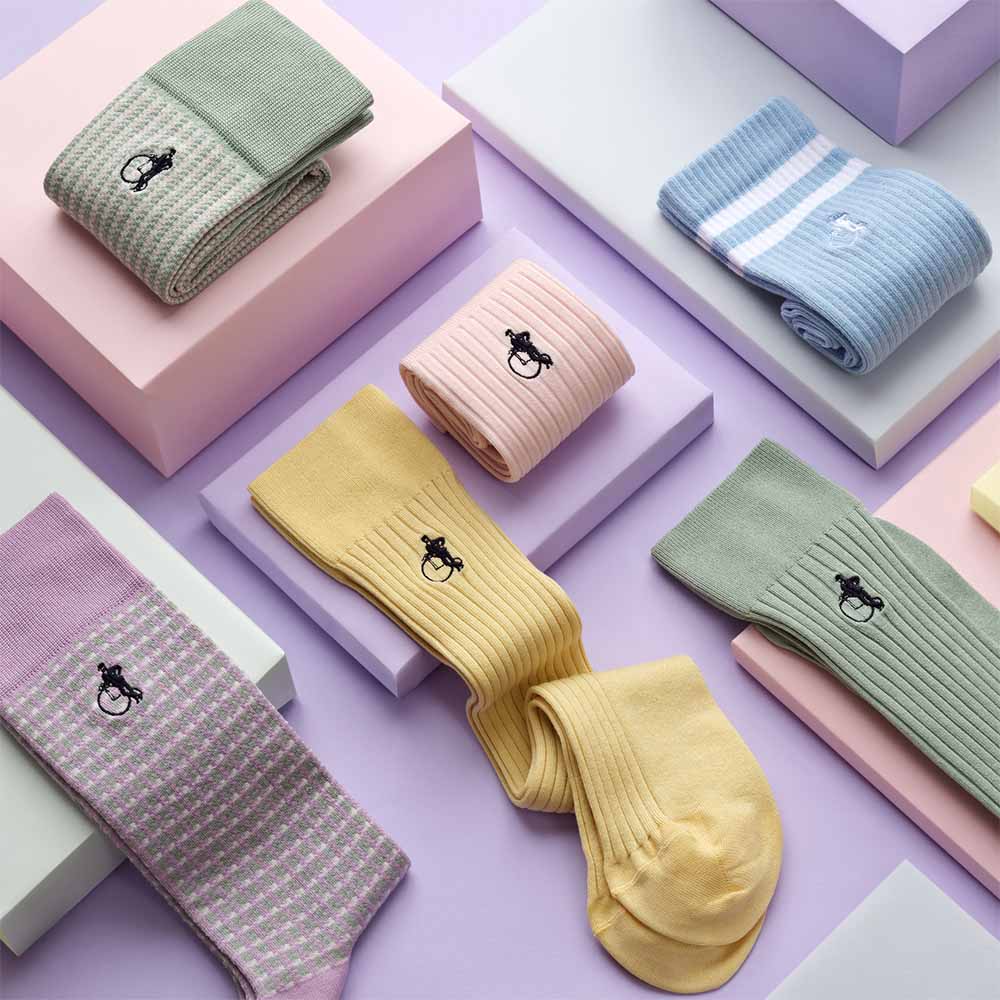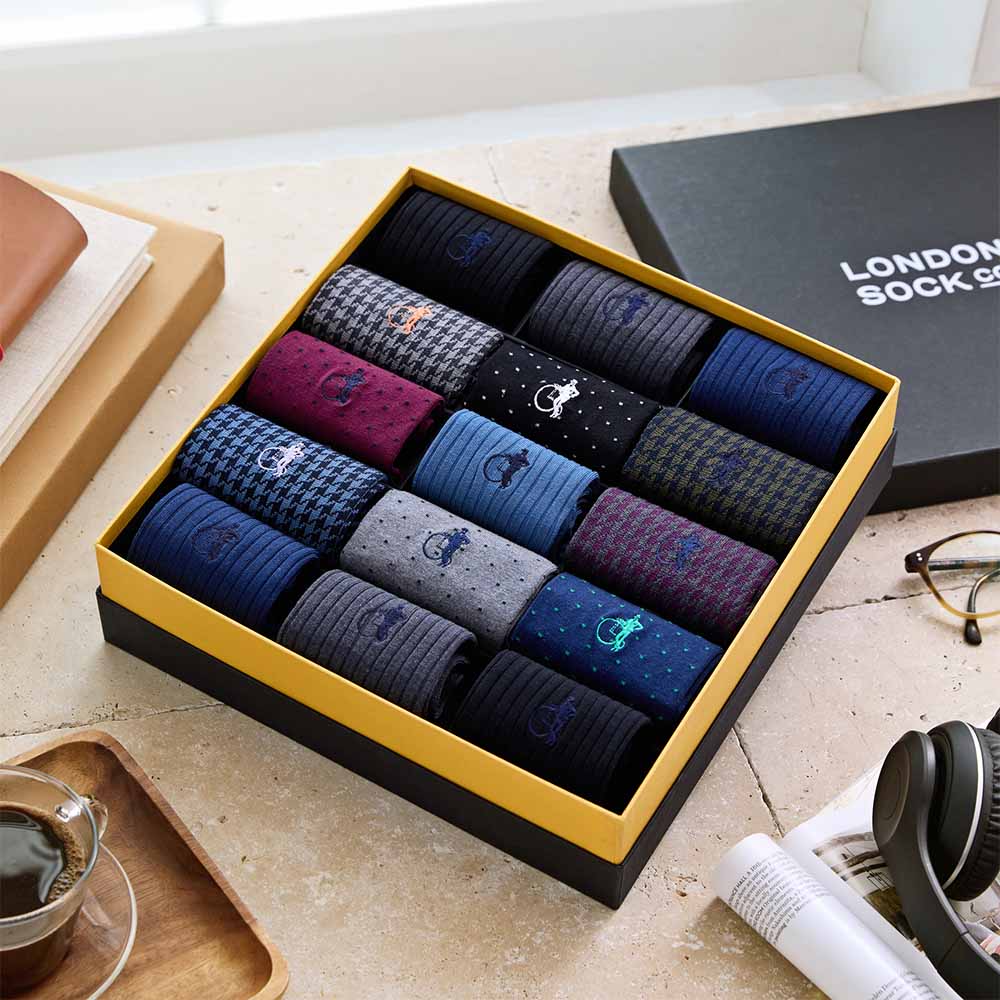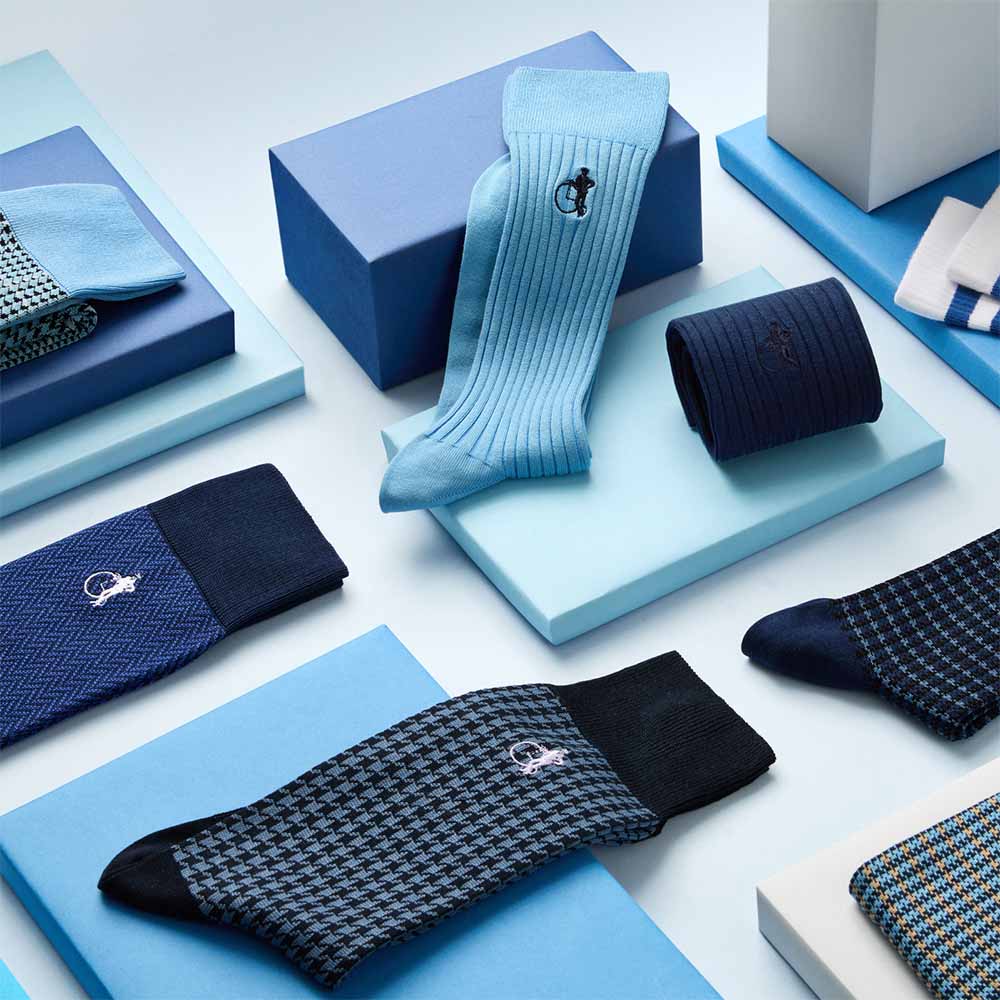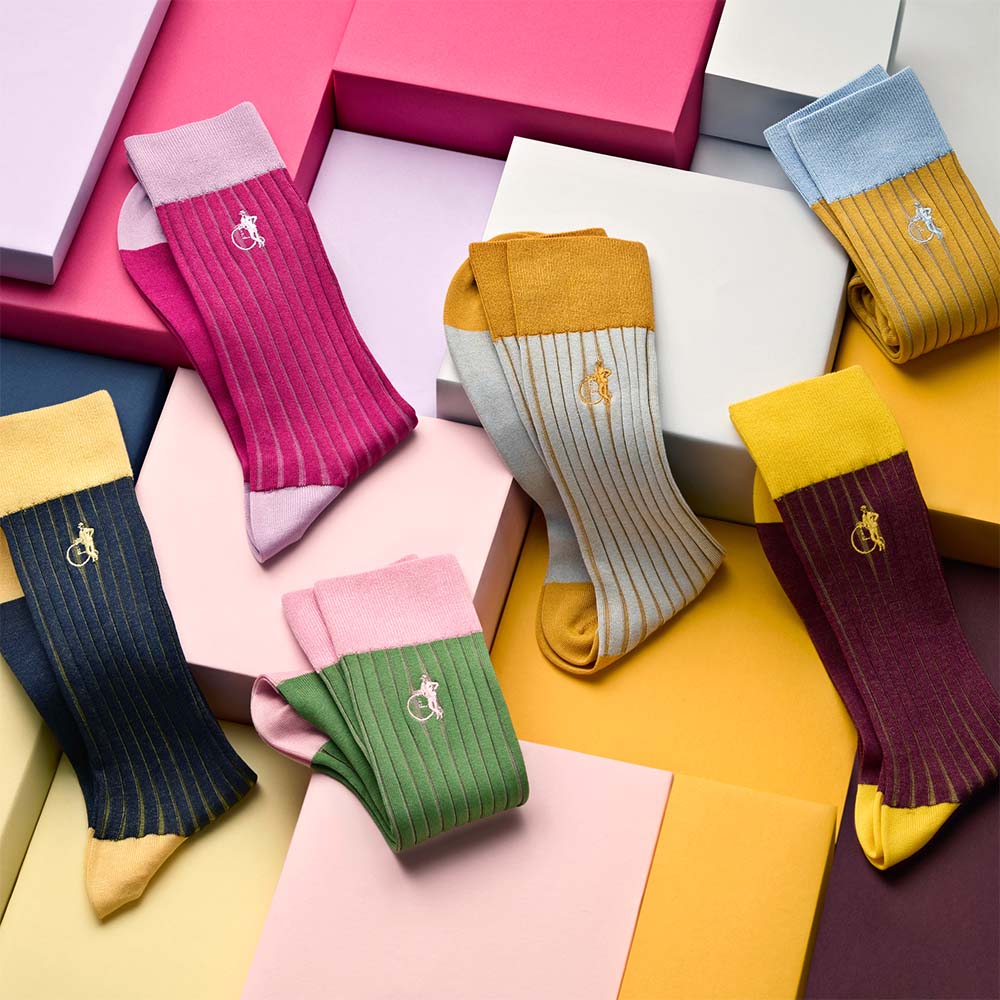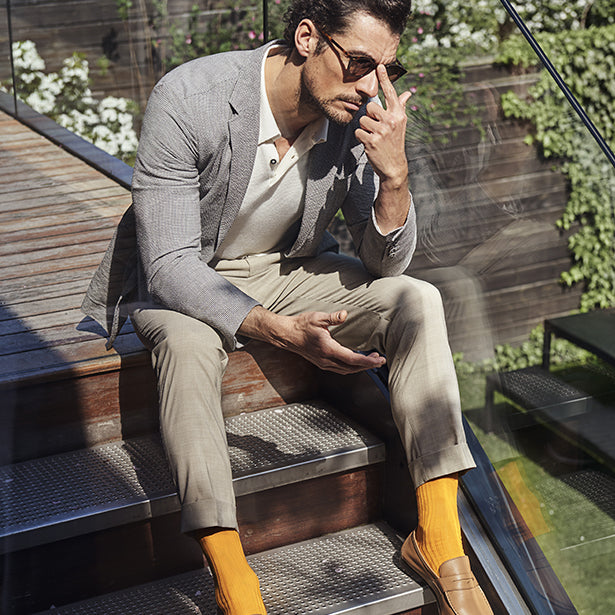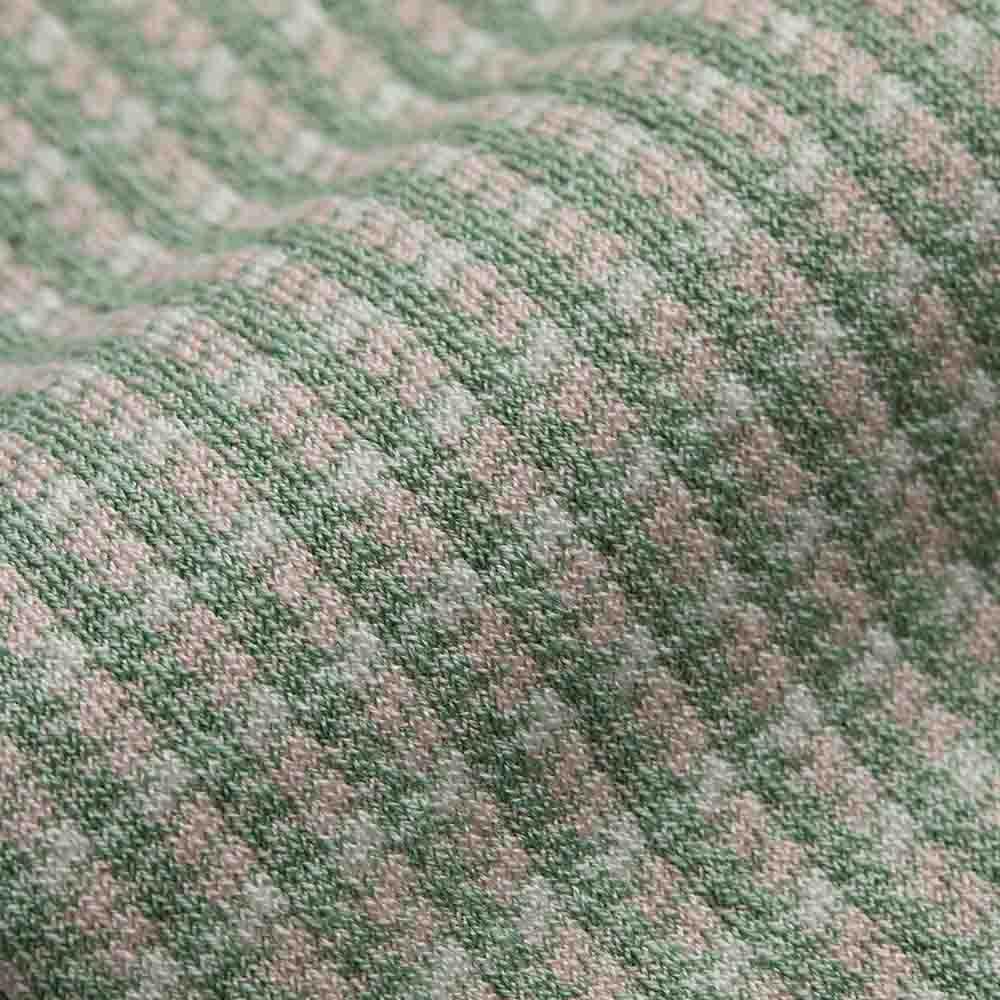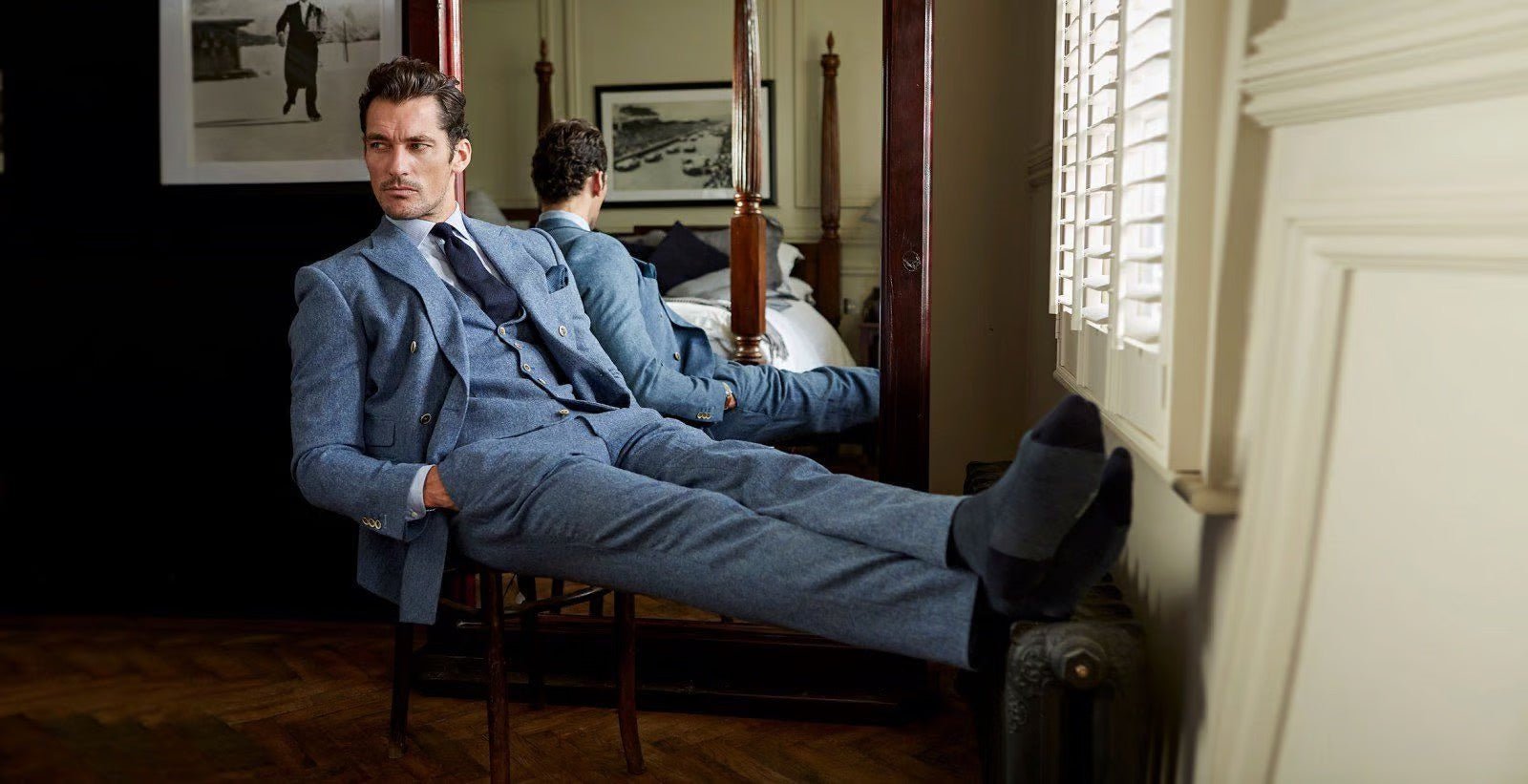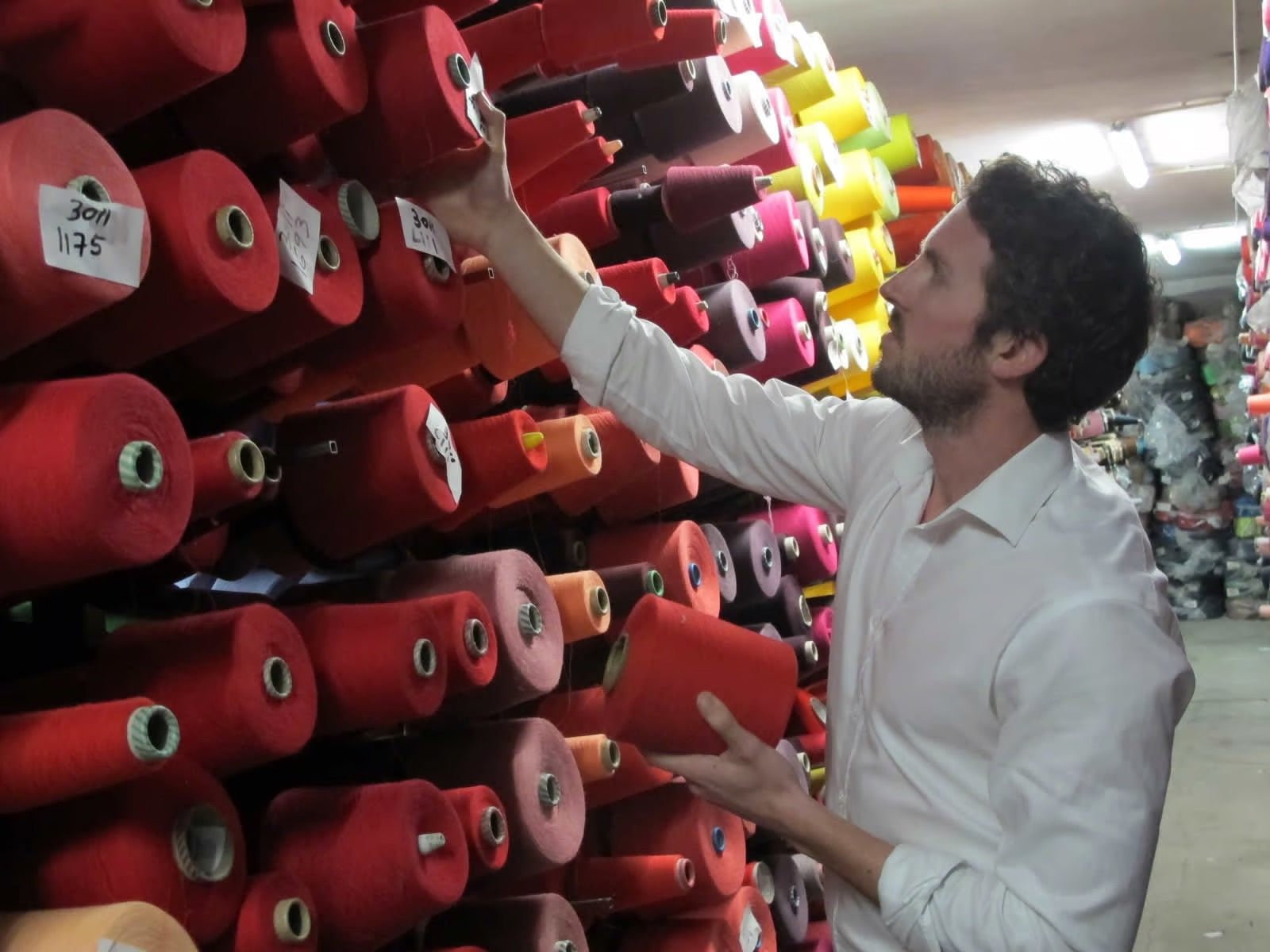
Founders Journal #2: The perfect blend. How we make our socks.
It’s one of life’s most pressing questions: just how are socks made? Find out how we make the perfect pair.
Ryan: When Dave and I first launched the London Sock Company, we had absolutely no experience of fashion or manufacturing. So, when it came to creating our original collection, we had to do a lot of research on manufacturers both in the UK and in Europe and were quite regimented about going through the process to understand, evaluate and select the best for our business.
Dave: Our research eventually took us to Portugal, which is quietly famous for the best cotton knitting skills in the world. We spent a number of weeks with our family-run producer, sampling different material blends, experimenting with different knitting techniques, testing elasticity, comfort, and weight. Attention-to-detail is just so important when it comes to the finished product. It was a real learning curve and it forces you to ask all of the stupid questions, which actually turn out to be not that stupid at all.

Ryan: We’ve always wanted to manufacture everything in the UK, but unfortunately that’s not as easy as you might think. Firstly there are very few sock makers left. Those that have survived, have done so by specialising in simpler products. There is less flexibility in terms of patterns and knitting methods, something we are always trying to explore and improve. We are making progress with a variety of luxury wool products and exploring some new UK designs. Ultimately, we would like to be able to make everything in Britain.
Dave: Most of our products are made with a type of material called Scottish Lisle Cotton, also known as Mercerised Cotton. The technique behind it dates back to Victorian times and was invented by a guy called John Mercer, and readily adopted by the booming cotton textiles industry in Scotland at that time. It essentially cleanses and defrays the cotton yarn, meaning you get a much cleaner, stronger thread, which is more durable and makes the colour really vibrant. Whilst more expensive, this is one of the key reasons our socks will last significantly longer than more traditional cotton materials.
Ryan: It sounds simple, but as we have learned there really is such a big difference between a good pair of socks and a bad pair. Fundamentally it all boils down to three things: the quality of the machinery, the quality of the actual material and the quality of the craftsmanship. Those are really the core elements that make a good sock. Things like comfort, fit and style – of course – are a little more subjective, but the key to all our manufacturing is always quality.
Dave: Socks are actually one of the most (if not the most) complex item of clothing to create well. They are knitted in a circular method, knit by knit, row by row. This is a challenge when you want to create interesting designs, without compromising on quality. When you look closely at London Sock Co. socks, you will notice how tight and closely knitted they are; this is another key feature and contributes to a stronger structure, as well as a better fit when compared to most fine dress socks. It’s only by using the most advanced machinery and knitting methods, overseen by the best skills in Europe, that we can continue to advance and improve our sock designs.

Have a question for Ryan and Dave or a particular area you’d like to hear about? Tweet @LondonSockCo and follow them on facebook.com/LondonSockCo and instagram.com/LondonSockCo
Read our next Founder’s Journal entry, ‘How we wooed David Gandy’ here
